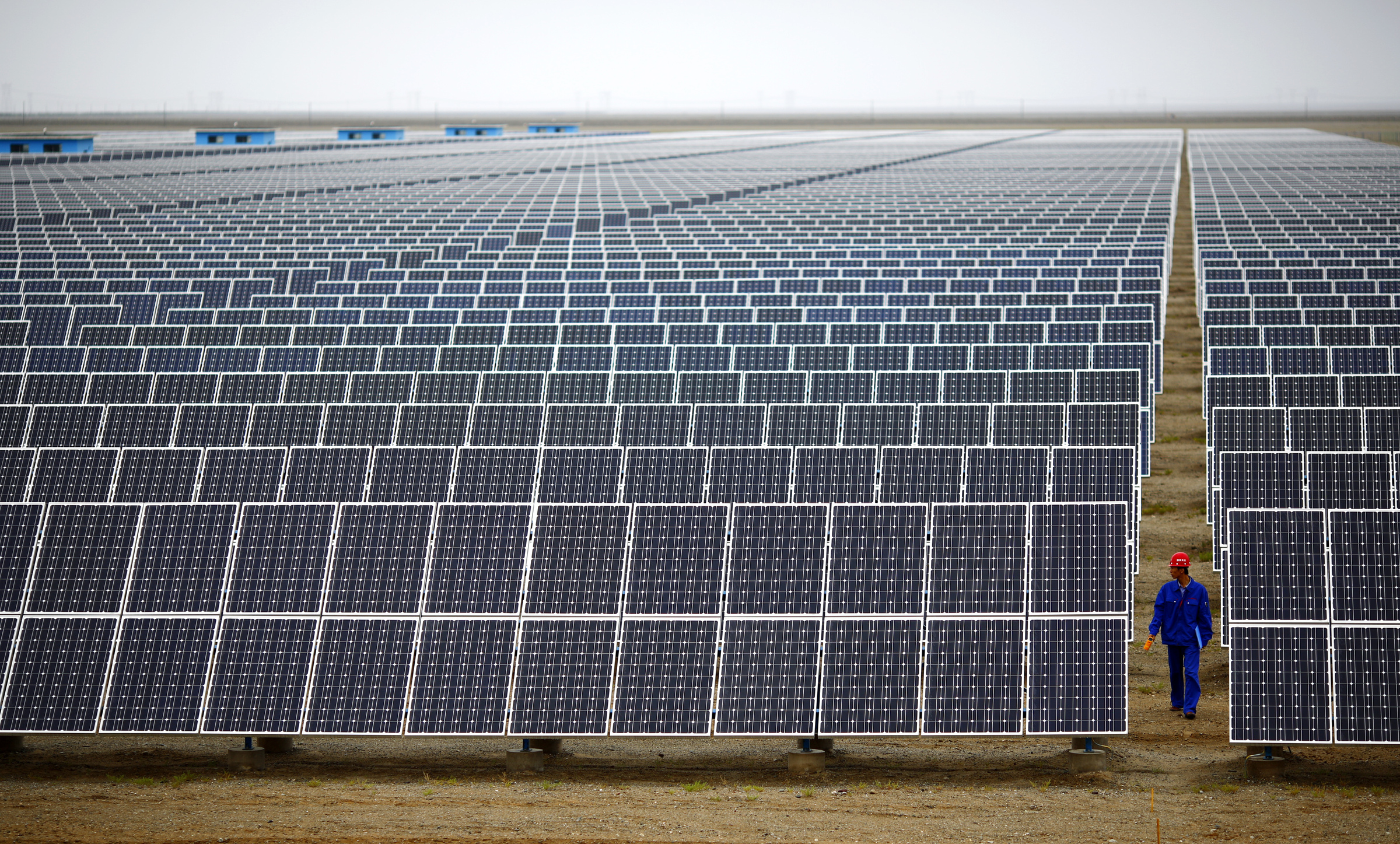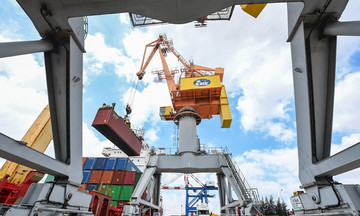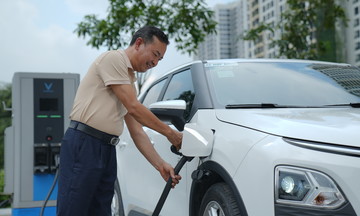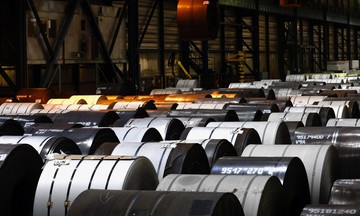The Centre for Research on Energy and Clean Air (CREA), based in Helsinki, Finland, released this information on 21/8. Among the emission sources, emissions from electricity generation—China's largest source of greenhouse gases—fell by 3%. The construction materials, metals, cement, and steel industries also saw a reduction in pollution.
China, the world's largest CO2 emitter, has seen emissions decline during periods of economic downturn, most recently in 2022 due to Covid-19. However, CREA expert Lauri Myllyvirta points out that this time is different because electricity demand grew by 3.7% while emissions still decreased.
The reason is the rapid increase in electricity production from solar, wind, and nuclear power, while coal-fired power decreased by 3%. "This time it's really a structural decline in China's emissions," he said.
 |
A solar farm in Dunhuang, Gansu, China. Photo: Reuters |
A solar farm in Dunhuang, Gansu, China. Photo: Reuters
Li Shuo, senior global policy advisor at Greenpeace East Asia, described the plateauing of carbon emissions as a turning point in the fight against climate change.
"This is a globally significant moment, offering a rare ray of hope in the bleak climate picture," he said. It also shows that reducing emissions while maintaining economic growth is possible, according to Li.
According to CREA, China installed 212 GW of solar power in the first six months of the year, more than the entire 178 GW capacity of the US as of the end of 2024. Solar has surpassed hydropower and is expected to surpass wind power this year, becoming the country's largest clean energy source.
In the first seven months of the year, solar and wind power accounted for 23% of China's total electricity production, compared to 19% in the same period in 2024. During the same period, the output of these two energy sources increased by 27%, far exceeding the 4% increase in total electricity demand.
Experts are optimistic that China's carbon emissions could peak before 2030. However, according to Lauri Myllyvirta, for the country to achieve its goal of carbon neutrality by 2060, emissions need to decrease by an average of 3% over the next 35 years.
Li Shuo warned that the country's continued reliance on coal remains a threat to climate progress. He recommends that the world's second-largest economy should transition to less resource-intensive sectors. "There is still a long way to go," he said.
Phien An (Reuters, AP)












